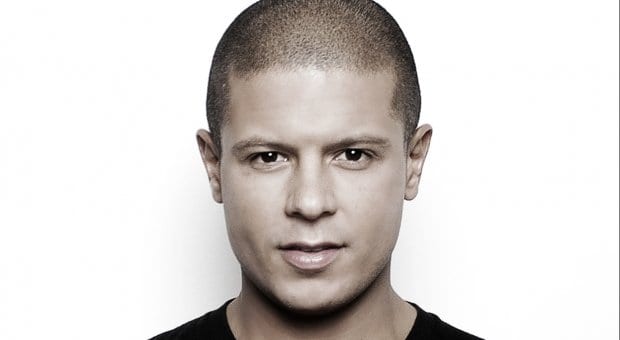
Glory Hole #1, from the Of Black Holes and Other Glories series. Credit: Courtesy of Fagner Bibiano

The Poetics of Bare #1, from The Poetics of Bare series. Credit: Courtesy of Fagner Bibiano
Fagner Bibiano may never have become a photographer if he hadn’t totalled his car. The Brazilian-born artist had a major accident his last year of college. Though he survived relatively unscathed, his vehicle didn’t. When the insurance money came, instead of replacing his wheels, he bought a plane ticket to London, where he took his first photography course.
“My dream had been to be a filmmaker,” he says. “But that was impossible back in Brazil at that time. There were very few colleges specializing in it, and they were extremely expensive. I was lucky enough to discover photography, which was a lot more accessible. Since then it’s been an adventurous love affair.”
Though his documentary images offer an unflinching look at the seedier sides of gay life, they don’t always tell their whole story on the first glance. An abstract wash of colour gradually reveals itself to be a bareback party. Simple snaps of parks take on a new meaning when labelled as cruising grounds. Stare long enough at a series of black squares and puddles of semen appear.
“I don’t think what I portray is shocking,” he says. “I think it’s all really beautiful. I’m not interested in offending people. My role as an artist is to create dialogue, and my work is an attempt to represent issues I find relevant. It’s my way of saying, ‘This is happening today and maybe we should talk about it.’”
His projects often see him sneak cameras into spaces they’re expressly forbidden, or at least frowned upon, something that’s led to occasional altercations. While shooting the entrance of a sauna, he was confronted by a woman from the neighbourhood. Demanding to know his intentions, she informed him that “no one likes being seen coming out of such a place.” Thinking on his feet, he blurted out that he was an architecture student documenting signage, which seemed to quell her concerns.
Another project saw him capturing racks of skin magazines in stores, a means of exploring the privileged position pornography is assigned through attempts to keep it away from children.
“Obviously, I didn’t say that when I was working,” he says with a laugh. “I just said something like I was photographing displays for a college project.”
Bibiano’s current series, Of Black Holes and Other Glories, captures glory holes in shopping centres, train stations and anywhere else he could find them. The photos look like abstract paintings, with their thin white lines and delicate hints of colour against a deep black background. But a closer look shows the surface details, the irregularities of the wall and trickles of semen.
“I’ve become increasingly fascinated by our condition as sexual beings and how that affects our lives and relations,” he says. “Coming out as gay in London played a big role in that. Sadly, it’s still much easier to be gay here than in Brazil. In London, nobody cares about other people’s sexuality. Everybody just wants to get on with their own lives.”
“Things are much better in Brazil in regards to homosexuality than when I left,” he adds. “We can get married with the same rights as a straight couple, and that’s incredible. But on the other hand, gay people still suffer a ridiculous amount of discrimination and bullying.”
He’d originally arrived in London planning to spend a year. More than a decade later he’s still there, happily partnered with a British passport.
“I’ve spent nearly half my life here, and I definitely consider myself a Londoner now,” he says. “Once you’ve lived in London, you can’t just leave. The art world is phenomenal, and there’s always something going on. As an artist, it’s more accessible and viable to make art here than it is in Brazil. On the other hand, the older I get, the more I miss my family. And living in London, you also miss blue skies and hot weather.”
Fagner Bibiano features in
Crash Open Salon
Runs until Sat, Jan 11
Charlie Dutton Gallery
1a Princeton St, London
fagnerbibiano.com


 Why you can trust Xtra
Why you can trust Xtra


